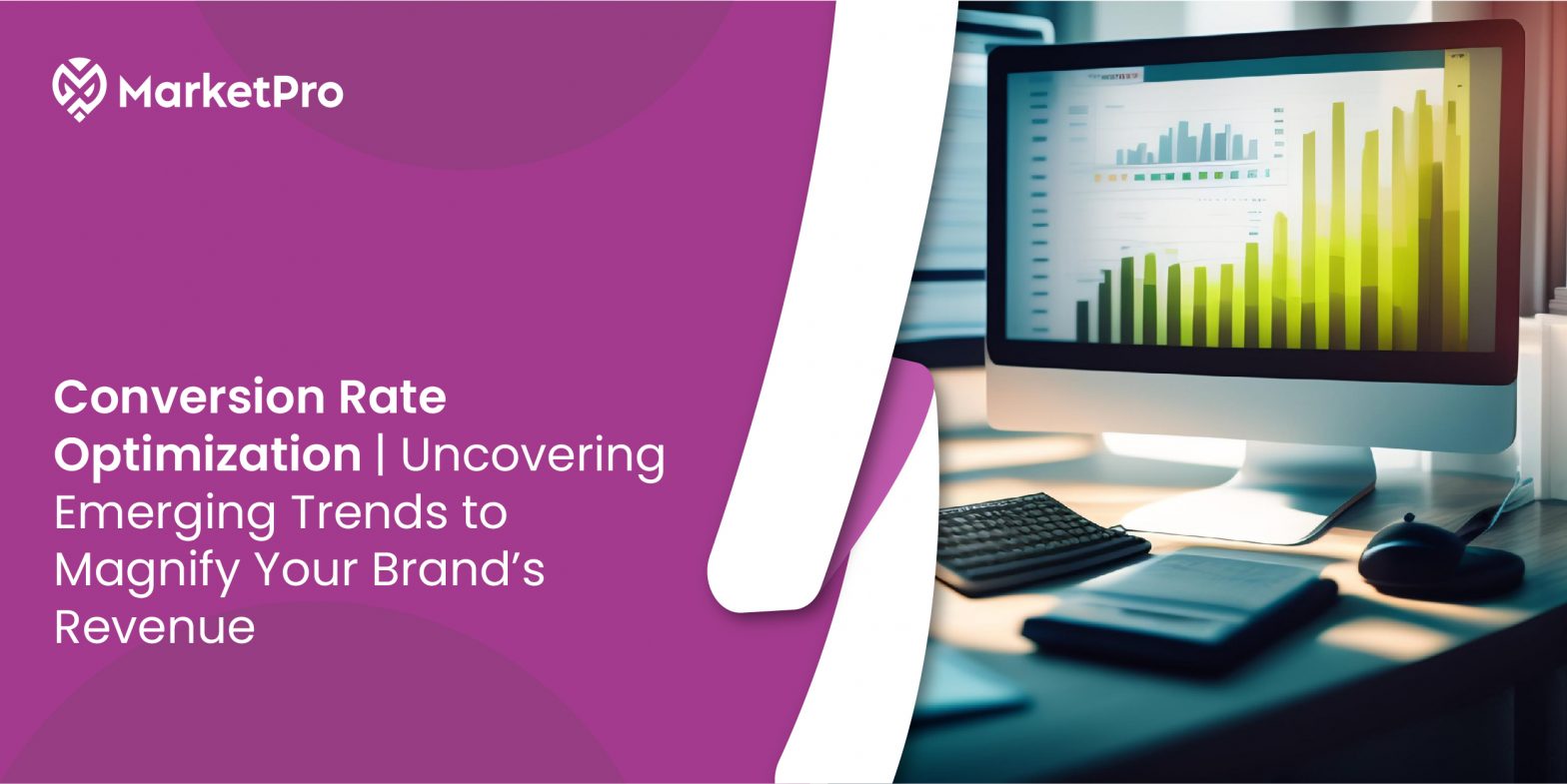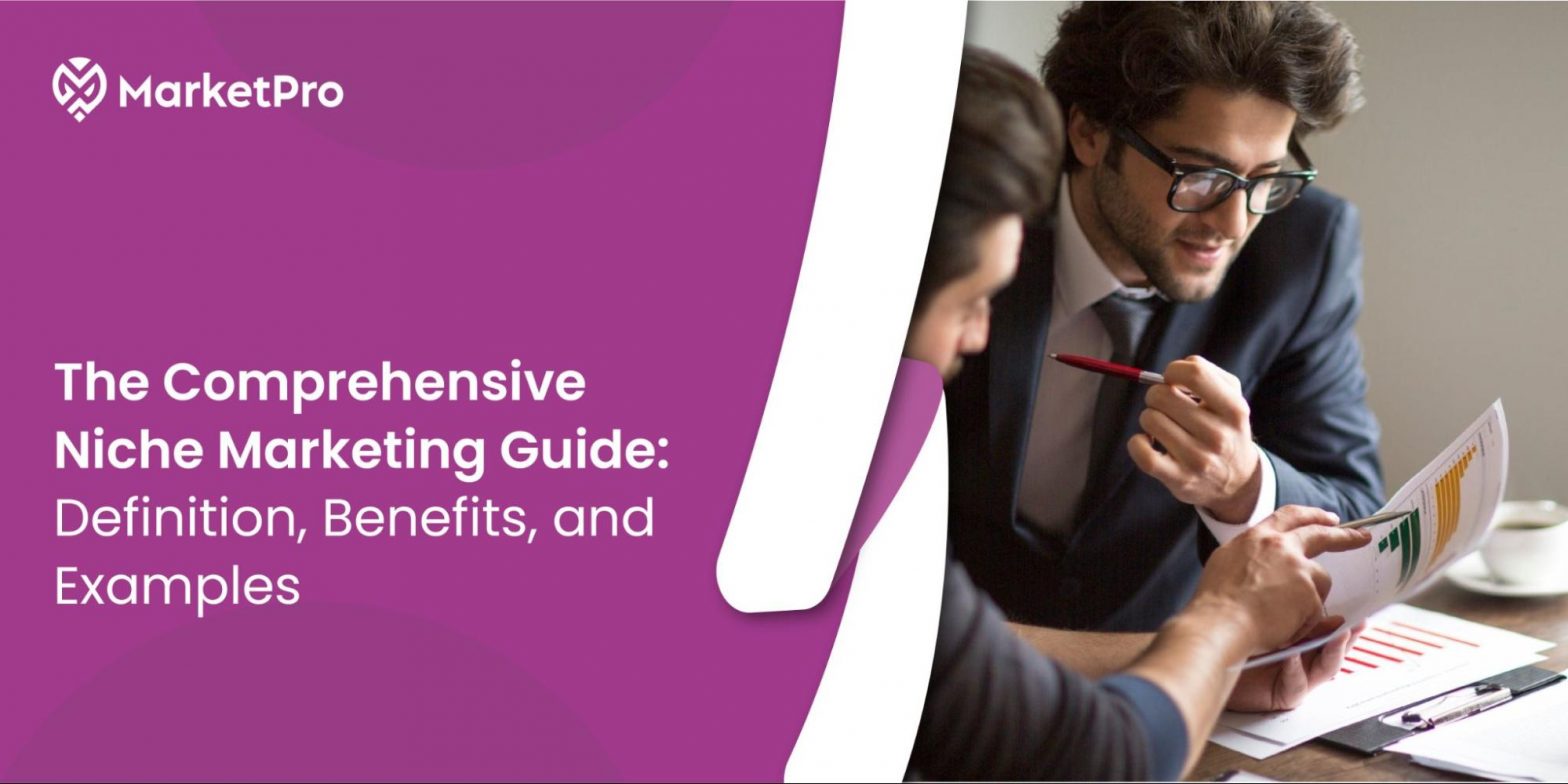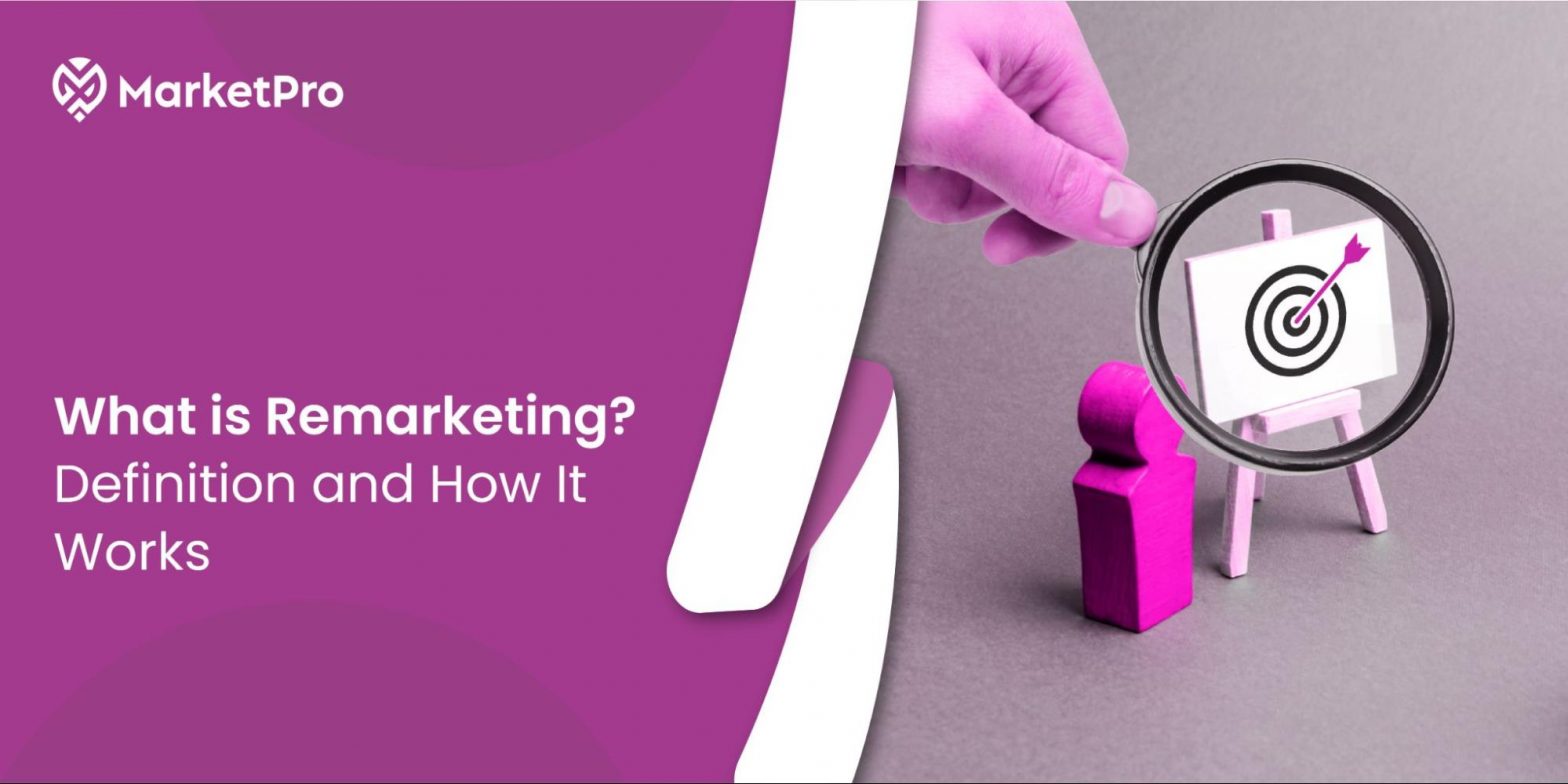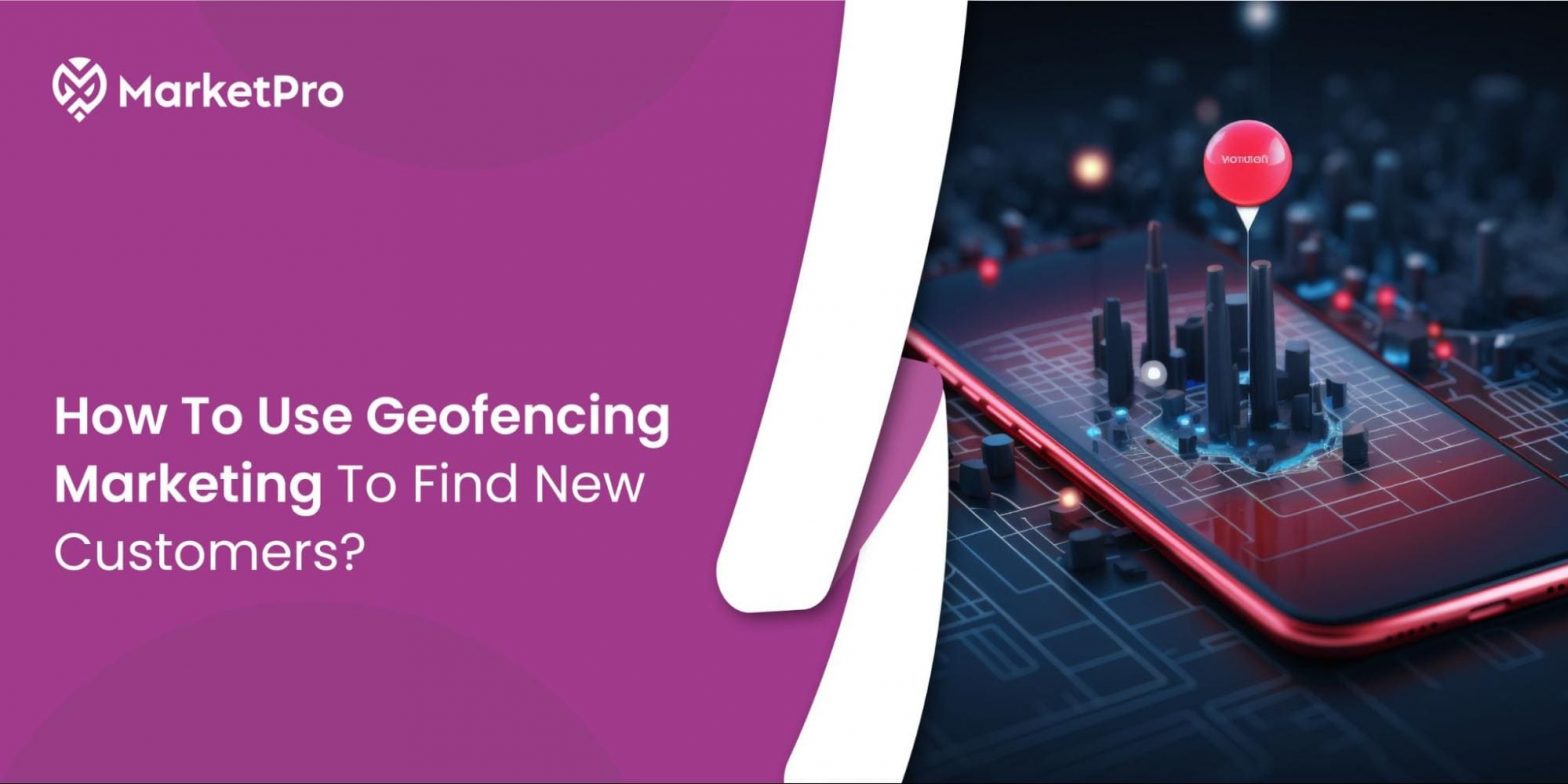- What is Conversion Rate Optimization?
- Different Types of Conversions
- How Does the Calculation of the Conversion Rate Work?
- Crucial Trends of Conversion Rate Optimization
- Moving towards User-Generated Content
- Implementing the Power of Personalization
- Mobile-Optimized Landing Pages
- Executing the Influential Presence of Chatbots
- Testing and Improving Conversion Rates
- Optimize Checkouts and CTA’s for Better Results
- What’s for CRO in the Future?
Conversion Rate Optimization | Uncovering Emerging Trends to Magnify Your Brand’s Revenue
Many companies need help to balance the scale between the number of visitors and leads. Most of the time, the perfect balance between the number of visitors and converting that traffic simply slips away from their hands.
The dire efforts to generate organic traffic to one website make no sense when it doesn’t convert at the end and wastes all the efforts of potential target leads.
But why do companies not generate suitable leads when traffic is pounding on their website?
Maybe they are not targeting the right audience or their web page loads longer than usual. But if their web pages meet all these requirements, why is there still a problem?
See, the visitors from specific platforms may or may not take the required action for many reasons. It may vary from a web page’s lack of personalization to failing to produce scarcity in its offerings or not providing the necessary reason to take the desired action.
And that’s where strategies like Conversion Rate Optimization (CRO) come in. Their emerging trends and innovations ensure that companies’ hard-earned marketing tactics bear the fruits of their efforts and finish their campaigns with actual results and meaningful conversions.
Before discovering the crucial trends of CRO, let’s first learn the basic definition and how they work.
What is Conversion Rate Optimization?
Conversion rate optimization bridges the gap between site visitors and website leads. It aims to increase the percentage of visitors who become actual leads by ensuring they take the desired action, simply referred to as a “Conversion.” This action may come in different forms, from signing up for a newsletter to buying a paid service product.
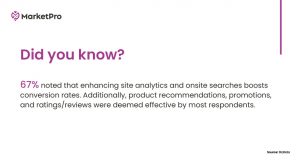
Different Types of Conversions
By the name conversion, it doesn’t mean that one customer has to take a specific action, like buying SaaS software or CRM if the market is Business-to-Business (B2B) or buying a particular product if it’s Business-to-Consumer (B2C). Let’s dive into different types of website conversions below:
Micro Conversion: This conversion type comes before the primary conversion step, in which the user shows initial interest in a product or service. For example, they are signing up for a newsletter for an e-commerce brand or signing up for a free webinar.
Macro-Conversion: This conversion solves the primary objectives of any company’s offering, such as purchasing the product or removing the product from the cart and buying or subscribing to a paid service on any website.
Suggested Read: Email Marketing 101 – The Ultimate Guide to Boosting Conversion Rate.
How Does the Calculation of the Conversion Rate Work?
To find any website’s conversion rate, divide the total number of visitors by the total number of conversions generated from the website and multiply that result by 100. The resulting formula will come as follows:
Conversion rate = Total Number of Conversions/ Total Number of Visitors* 100
Let’s do the simple math now; suppose one website achieves 100 conversions and 3000 visitors. The conversion rate would be:
Conversion rate = (100/3000) *100% = 3.33%
This means 3.33% of visitors take the required action on their website. And this calculation gives businesses a blueprint for their conversion campaign.
Crucial Trends of Conversion Rate Optimization
Getting meaningful conversions is becoming more challenging daily due to companies’ focus on traffic generation and increased competition over digital channels. Consumers having everything in the palm of their hand makes them more cautious and skeptical before making a purchase, and these actions may cause deliberate damage to the company’s marketing efforts. And that’s where conversion rate optimization strategies take their due place. Ever-changing CRO ideas and trends make them more potent than ever in helping businesses reach the finish line.
Moving towards User-Generated Content
Companies must focus more on adding User-Generated Content (UGC), as it sheds a positive light on brands’ offerings and raises consumer confidence. Customers are more likely to appreciate the reviews or product or service images of actual past customers instead of brand-generated product images.
If consumers buy a product from one brand for the first time, they may need social proof or actual pictures of a product, and UGC content is more powerful and meaningful for potential buyers than brands’ fancy and technical claims.
Because 95% of customers suggest that personal recommendations influence their decisions,
This CRO statistic shows companies can avoid sugarcoating their products with unnecessary claims and bragging and let UGC do their job.
Implementing the Power of Personalization
Nothing makes users feel special than a customized and tailored search page on their feed. But let’s be honest. It may also annoy them if certain products keep popping up on their feed, and that’s where AI and machine learning can help them navigate these complex buyer’s personalized stages.
AI allows us to automate our personalization efforts and where machine learning and its practical tools enable companies to better understand their user interest and preferences.
They research customers’ personas by segmenting them based on geographic location, demographics, and active time on particular search engine platforms.
Ever wonder if someone searches for a watch or SaaS service or product on Google and, after a while finds a relevant product or service ad popping up on their Instagram feed? Yes, that’s the power of machine learning in personalizing consumers’ buying experiences.
Mobile-Optimized Landing Pages
Whether businesses are from B2B or B2C, the urge to optimize their sales page and landing pages will always be a dire concern in converting their leads. Because of the increasing shift towards mobile devices, most consumers are actively searching for or looking to buy products from their mobile devices.
Suggested Reads: Creative Website Design: 8 Strategies to Improve Site Structure
Companies’ landing pages, pricing pages, or checkout pages failing to cater to optimized mobile screens will negatively impact the company’s conversion cycle, increasing the bounce rate and demeaning the website’s overall user experience.
Executing the Influential Presence of Chatbots
The presence of chatbots on e-commerce, SaaS, or other platforms transforms companies’ lead generation sites.
AI-powered chatbots and automation give swift results to buyers’ queries and answer their questions in seconds with personalized responses.
Let’s imagine one likes to buy the product but needs specific requirements or guidelines. Instead of waiting for a reply or follow-up email from a customer representative, they will get a quick, personalized response from a chatbot. Boom!
This decreases the website bounce rate and fosters meaningful connections and loyalty among consumers. To conclude, Their primary focus is to give answers to customers at the right place at the right time—that’s it!
Testing and Improving Conversion Rates
One of the old and evergreen trends of conversion rate optimization is testing their outcomes and laser focusing on the conversion rates while quickly adapting to recovering damaged or faulty areas of conversion pages.
Ensure that relevant website analytics are acquired for A/B testing to learn about traffic comprehensively and achieve conclusive results. Continuously conduct testing and necessary measures to improve conversion rates and ensure the website gets the relevant traffic to its conversion pages.
Optimize Checkouts and CTA’s for Better Results
Last but not least is personalizing the CTAs, providing the best user experiences, and crafting pricing pages with personalized messages. Showing consumers they care and value their purchase with humanized responses.
And also works on constantly optimizing brands’ checkout pages, allowing consumers to operate their checkout smoothly with no hassle on different payment options with an easy checkout process and clutching onto the mood-wrecking bits such as last-minute price changes and page processing speed.
What’s for CRO in the Future?
To wrap up, companies need to ensure they acquire specific tools and professionals to navigate their conversion journey because, in the end, what’s the point of getting all the traffic and awareness when they cannot convert that traffic and earn significant revenue from it? However, CRO will only grow shortly, considering its importance and emerging trends in steering any company’s financial status and online presence.
Market Pro has helped many businesses get out of that rabbit hole and bridge the gap between traffic and leads with its massive hold on updated CRO trends. Our expansive CRO audit and possession of the right tools and individuals can complement any business’s conversion scale.
Subscribe to get the latest offers, sneak peeks, and updates delivered straight to your inbox! See our Privacy Policy!
